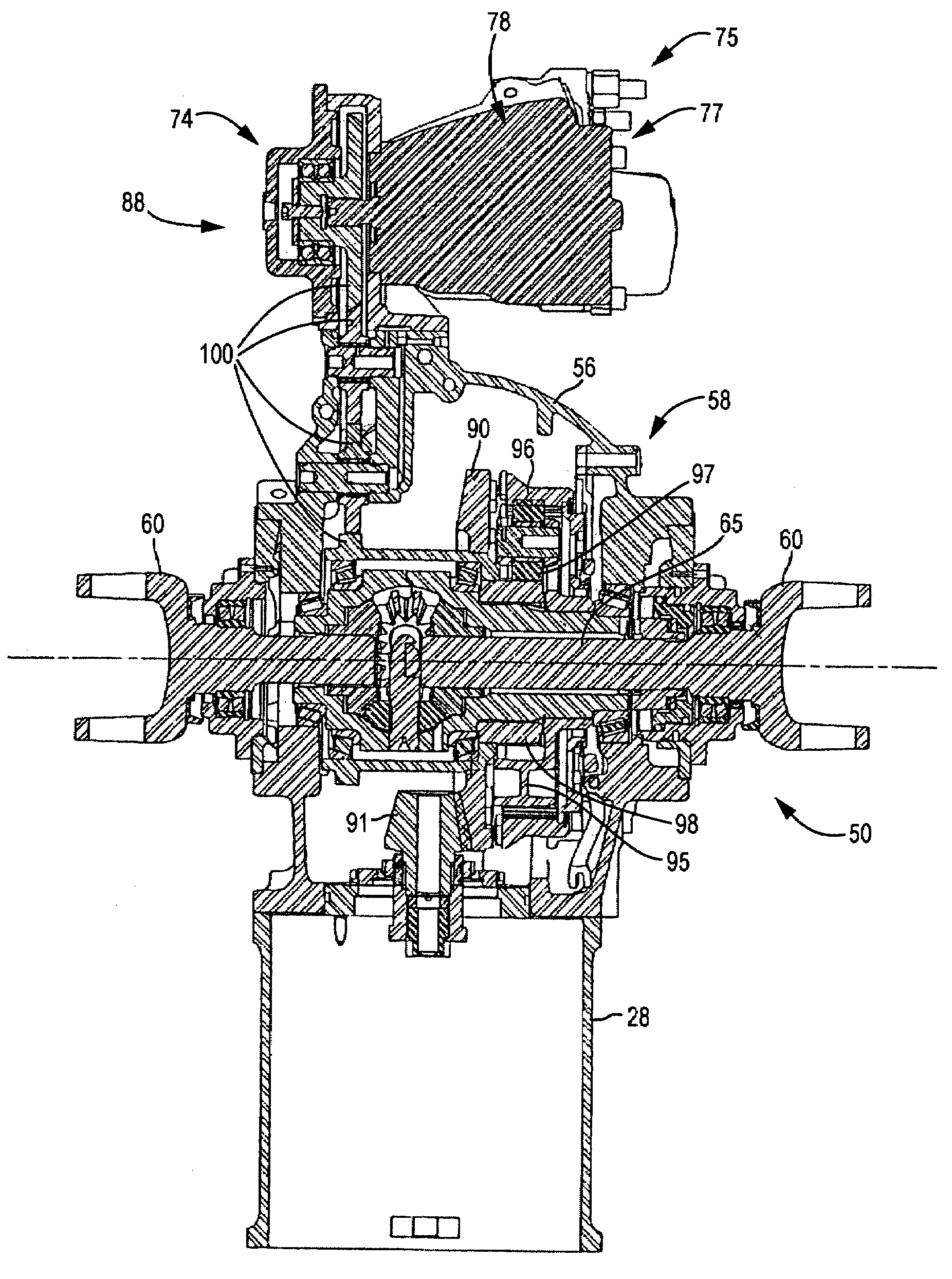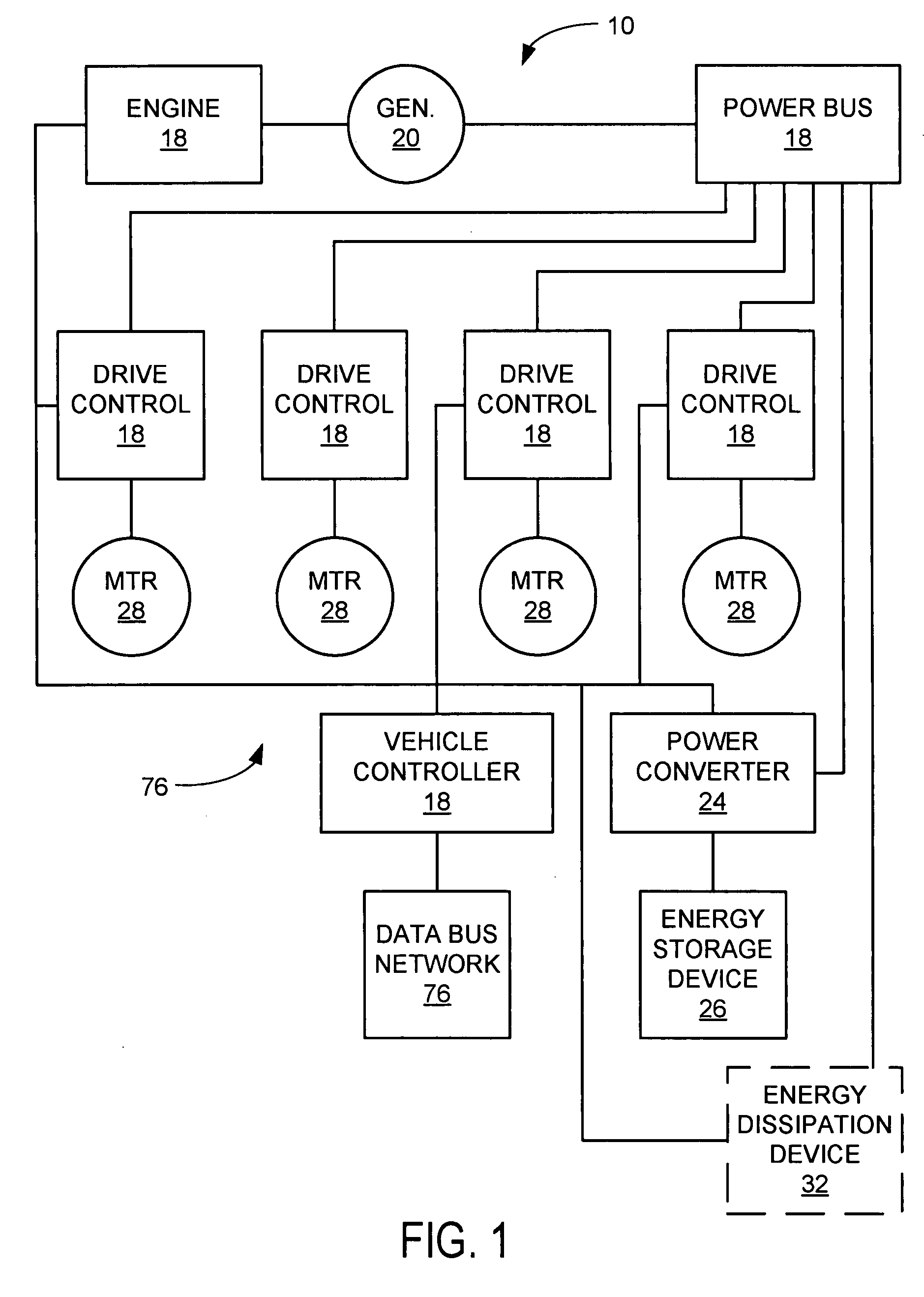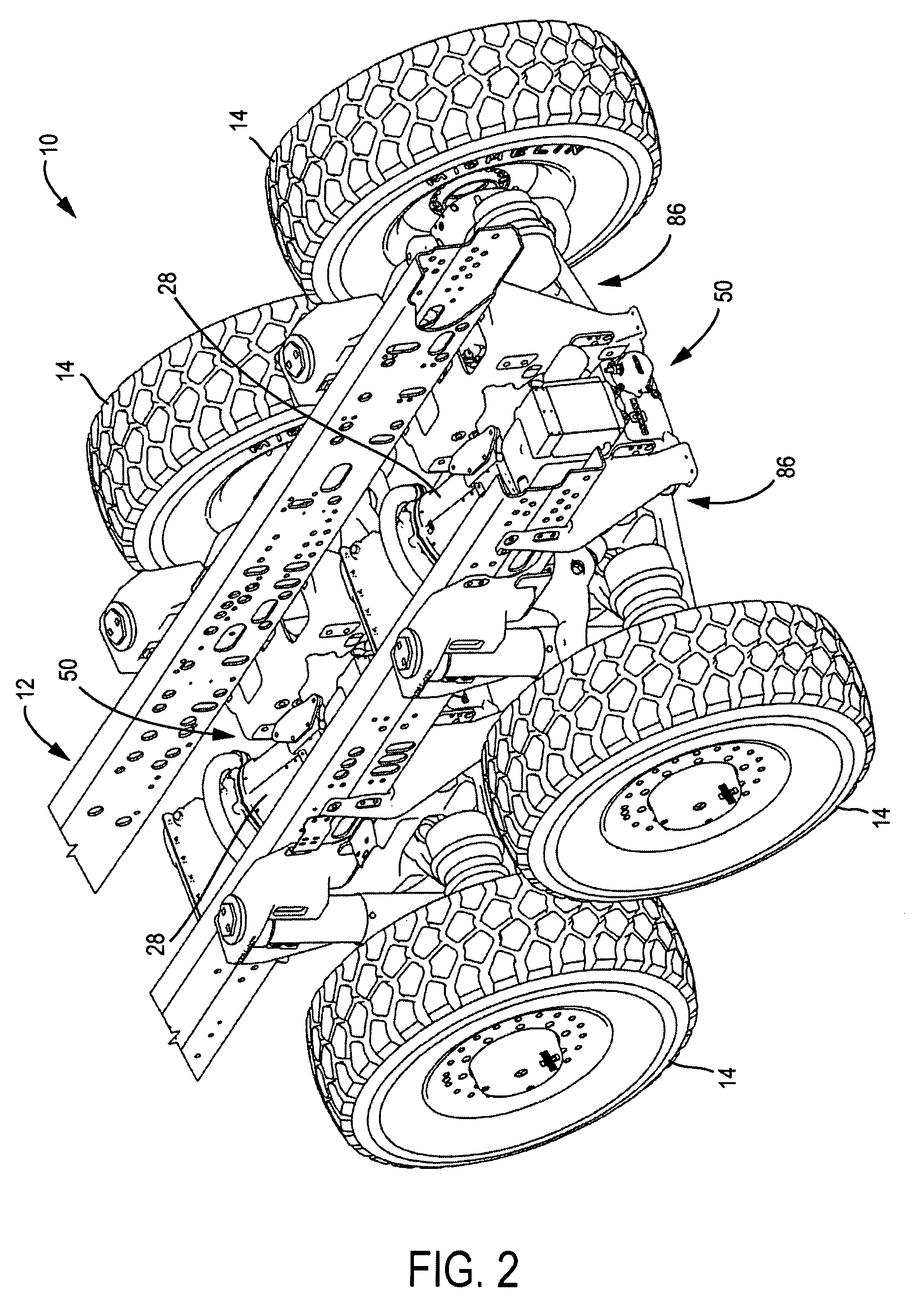Power takeoff for an electric vehicle
a technology of electric vehicles and power takeoffs, applied in the direction of electric propulsion mounting, transportation and packaging, gearing, etc., can solve the problems of occupying space on the vehicle, “off-the-shelf” components are not readily adaptable for use, and the maintenance of such systems is expensiv
- Summary
- Abstract
- Description
- Claims
- Application Information
AI Technical Summary
Benefits of technology
Problems solved by technology
Method used
Image
Examples
Embodiment Construction
[0012]FIG. 1 is a schematic diagram of an electric vehicle 10 according to an exemplary embodiment. An electric vehicle is a vehicle that uses electricity in some form or another to provide all or part of the propulsion power of the vehicle. This electricity can come from a variety of sources, such as stored energy devices relying on chemical conversions (batteries), stored electrical charge devices (capacitors), stored energy devices relying on mechanical stored energy (e.g. flywheels, pressure accumulators), and energy conversion products. A hybrid electric vehicle is an electric vehicle that uses more than one sources of energy, such as one of the electrical energy storage devices mentioned above and another source, such as an internal combustion engine. By having more than one source of energy some optimizations in the design can allow for more efficient power production, thus one can use power from different sources to come up with a more efficient system for traction. The elec...
PUM
 Login to View More
Login to View More Abstract
Description
Claims
Application Information
 Login to View More
Login to View More - R&D
- Intellectual Property
- Life Sciences
- Materials
- Tech Scout
- Unparalleled Data Quality
- Higher Quality Content
- 60% Fewer Hallucinations
Browse by: Latest US Patents, China's latest patents, Technical Efficacy Thesaurus, Application Domain, Technology Topic, Popular Technical Reports.
© 2025 PatSnap. All rights reserved.Legal|Privacy policy|Modern Slavery Act Transparency Statement|Sitemap|About US| Contact US: help@patsnap.com



